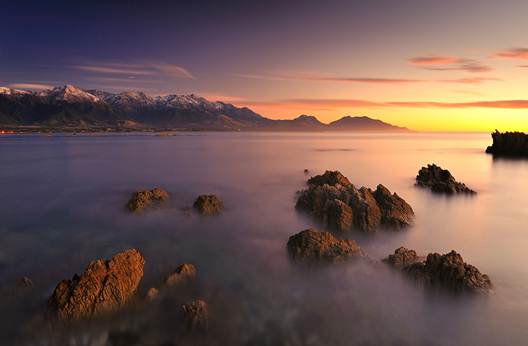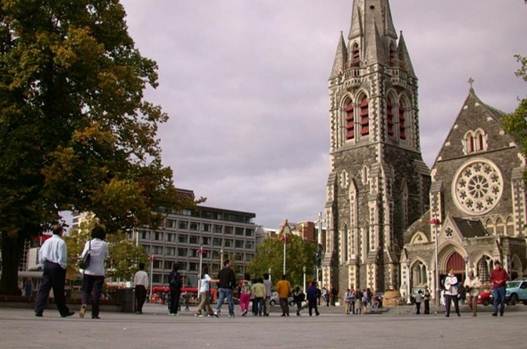I am in God’s country to test my fitness. If
these mountains are wild enough and remote enough for a seabird to test
Darwin’s “survival of the fittest” theory, I can only imagine what they will do
to me.
There’s a knack to traversing scree slopes.
However, judging by the white-knuckle grip I have on my guide’s hand and the
pained expression on his face, I have not mastered it. Like flakes of crumbled
Weet-Bix, the loose rubble slips and slides under my boots as I shuffle towards
the top of the 1,522-metre Surveyor Peak, deep in the Seaward Kaikoura Ranges
on New Zealand’s South Island.

the
Seaward Kaikoura Ranges on New Zealand’s South Island
As we approach the summit, the clouds roll
back revealing jagged peaks wearing shawls of grey mist. I can see across the
ocean to the Kaikoura Peninsula and as far south as Christchurch, while in the
distance the legendary 2,590 metre high “Te Ao Whekere’ or ‘World of the Gods’
stands like a signpost to the heavens.
I am in God’s own country with two goals –
to test my fitness and to learn more about the Maori concept of Kaitiaki
(meaning caretaker of the land). The land we are walking on is protected as the
Puhi Peaks Nature Reserve – not just a handsome mountain range – but one of
only two places left on earth (both within the Seaward Kaikouras) where the
Hutton’s Shearwater breeds and nests. If these mountain are wild enough and
remote enough for a seabird to test Darwin’s ‘Survival of the Fittest’ theory,
I can only imagine what they will do to me.

Survival of the slowest
The three-day guided Kaikoura Wilderness
Walk begins at the woolshed at the historic Puhi Peaks Station, a remnant from
the early fanning days. It is a few hours drive north of Christchurch on the
east coast and a 45 minute drive north of Kaikoura through the `Valley of the
Feathers'. Maori hunters named the valley for the feathers the moa, or puhi, (a
now extinct flightless bird resembling the emu) provided for their cloaks. It's
October and late in the walking season. Our small party of five includes me, a
German honeymoon couple and our guides Lance and James.

Christchurch
is the regional capital of Canterbury, New Zealand.
Day one is a six-hour hike from an
elevation of 550m to our base for the night, Shearwater Lodge, a luxury
eco-retreat set at 1000m. Carrying a light daypack (our luggage has been
transported to the lodge), I set off at a cracking pace through the lowland
shrubs and up the steep mountain trail. Conditioned to exercising indoors or in
a hurry, I find it difficult to establish a relaxed walking rhythm. With legs
and lungs on fire I hear nothing except the blood pounding in my ears and see
little except my boots. "Slowly, slowly," suggests Lance, placing his
steadying hand on my elbow. "Take your time to smell the tea trees."

Survival
of the slowest
And so I do. I inhale the honey-like
fragrance of the manuka tree, the lemony tang of kanukas and the pungent aroma
of wet soil. I stare up at soaring mountains and down at rushing streams. And I
listen - to bell birds and bush robins, chuckling streams and a boisterous
breeze.
As we walk Lance talks about the Hutton's
Shearwater and points out the colony, just below the peak of Te An Whekere.
These hardy little birds, the highest nesting seabirds in New Zealand, travel
at 150 kilometres per hour, breed in burrows and every winter rocket over to
Western Australia to loll about in the Indian Ocean.
With my head full of birds and bees we soon
reach a clearing, Totara Saddle, where the lunch fairies have laid out hampers.
Inside my lunch box is a handwritten note, "Take your time to enjoy the
walk today," signed Nicky. It will be a punishing number of hours before I
meet the owner of this message.